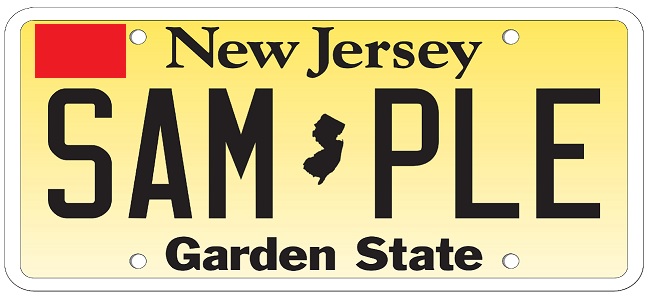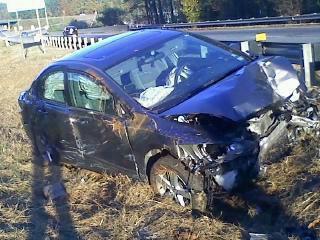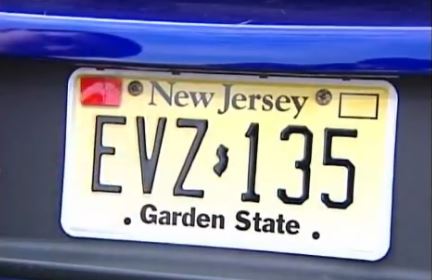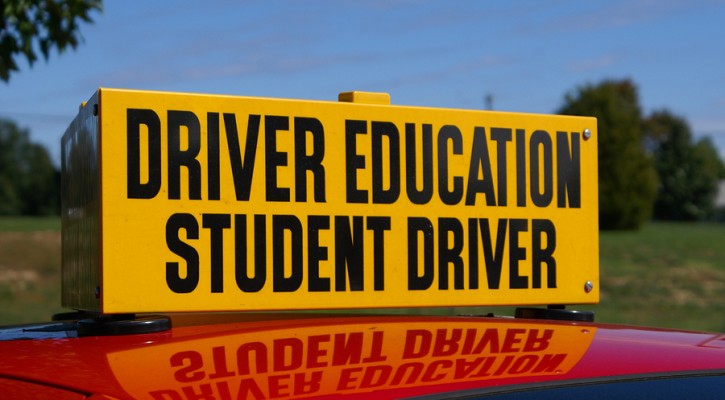Tag Archive: teen driver safety

The Deadliest Period For Teen Drivers
June 8, 2016
The recent Memorial Day weekend began the deadliest period of the year for teen drivers. Known as the “deadliest 100 days,” the period between Memorial Day and Labor Day has, for many years, seen a significant rise in the deaths of teen drivers and their passengers.
The fatality increase during the summer months is due to several factors:
- Teens are out of school with extra time on their hands.
- Teens are bored and looking for excitement.
- Teens often fail to pace themselves – spending all day doing physically taxing activities at the beach and then going out late into the night.
- Alcohol or other drugs are often a part of the summer activities.
One might think that inexperience behind-the-wheel would also play a major role in the summer death rate and it does to an extent however, teens with the least experience have a much lower death rate than teens that have been driving a few years. Among Florida teen drivers aged 15 through 20 killed in 2014, drivers aged 15 through 17 made up only 12 percent of the teen deaths. Teen drivers aged 18, 19, and 20 accounted for 88 percent of the teen deaths during the deadliest period.
The death rate among older teens may be due to the fact that the older teens, after getting over the initial fear of solo driving become less cautious and more complacent. Another reason is that restrictions imposed on younger drivers by Graduated Driving Laws (GDL) are generally lifted by age 18 and teens who exercised caution during their probationary driving periods have now thrown caution to the wind.
Another issue that adds to the deadliest period is that of driver distractions. When discussing driver distractions, most automatically think of cell phones and texting. Those are serious and dangerous distractions but, surprisingly, they aren’t the distractions that contribute to most teen crashes. The AAA Foundation for Traffic Safety recently published the results of a study that used video cameras to follow 1,691 teen drivers for five years. During that period, the study subjects experienced a total of 538 crashes. While distractions by cell phones led to 12 percent of the crashes, distractions by talking to and interacting with teen passengers led to 15 percent of the crashes.
Teen passengers are a major distraction for teen drivers and that’s why many states restrict the number of passengers a teen driver can carry under their GDL laws. The lifting of both cell phone and passenger restrictions at age 18 is probably a major factor for the deaths among older teens during the deadliest period.
No matter what state law may say, parents can still impose their own driving restrictions on teens. Parents can limit the number of passengers to reduce distractions and they can ban the use of cell phones while driving. Parents who set the example by limiting their own use of cell phones and other distracting behaviors while driving stand the best chance of getting their teens to obey the rules.

Have Red Decals Reduced Crashes For Teen Drivers? – It Depends!
July 1, 2015
A newly published study on the use of red decals by teen drivers in New Jersey seems to contradict a study published last year but that depends on the type of license the teen driver holds.
In 2010, New Jersey enacted a law requiring that teen drivers display a red decal in the upper left hand corner of the vehicle license plate. The law was designed to allow law enforcement officers to identify newly licensed teen drivers more easily in order to enforce compliance with the state’s graduated driver license laws (GDL).
Under the New Jersey GDL laws, there are two different permit phases that require a new driver to practice with an accompanying adult driver for at least six months before applying for a probationary license. A teen with a probationary license must drive unsupervised for at least one year and be at least 18 years of age in order to qualify for a basic driver’s license
Under the GDL laws, teen drivers with either a permit or a probationary license:
- must be accompanied by a licensed driver over the age of 21 during the permit phase,
- are prohibited from driving between the hours of 11:01 p.m. and 5:00 a.m.,
- are prohibited from using hand-held or hands-free cell phones or any other electronic devices.,
- are limited to the number of passengers they can carry, and
- must wear seat belts.
The new study published in the journal Injury Prevention attempted to find out if the red decals had any effect on the crash rates of teen drivers during the permit phase. Just like the earlier study, using driver license information and the police reported crash database, they did a comparison of teen crash rates during the four years before the law went into effect with the crash rate in the two years after enactment of the law.
The surprise was that there seemed to be no difference in the crash rate for permitted drivers before or after the law took effect.
The previous study found an overall reduction of 9.5 percent in crash rates for teens after the law went into effect.
So, why the difference? The new study looked strictly at the crash rate for permitted drivers. Drivers with a permit must be accompanied at all times by a supervising driver over the age of 21. Under New Jersey law, if a permitted driver commits a traffic offense, both the teen driver and the supervising driver are held responsible.
The researchers feel that the reason the crash rate for permitted drivers didn’t change was that a permitted driver under the supervision of an adult driver is going to drive more carefully anyway, whether or not a red decal is attached.
The real change to the crash rate was in unsupervised drivers during the probationary license phase. Those probationary drivers experienced a significant drop in crash rates after the requirement for red decals went into effect. Researchers feel the reason for the difference is that, unlike teen drivers in other states, probationary drivers in New Jersey tended to drive more carefully and were less likely to disobey the GDL laws because the red decals made them more visible to police.
Read more: Branding Teen Drivers As Newbies Doesn’t Prevent Crashes

Teen Drowsy Driving
December 8, 2014
Drowsy driving among teens is an issue that doesn’t get much notice when compared with all the other issues teen drivers face on the road but it’s a critical problem in the US. The following story is a typical example of the problem.
A 16 year old driver with less than 6 months solo experience behind-the-wheel set out, after school and cross country practice, with his 14 year old brother as a passenger to pick up their mother. Continue Reading

Red Decals For Teen Drivers Reduce Crashes
November 12, 2014
Red decals used to identify teen probationary drivers in New Jersey have significantly reduced involvement in motor vehicle crashes according to a study conducted by the Children’s Hospital of Philadelphia (CHOP). In 2010, New Jersey enacted “Kyleigh’s Law,” an act that required all 16 to 20 year old drivers who hold a learner’s permit or intermediate license to display a red decal on the front and back license plates of any vehicle they drive.
New Jersey has some of the most comprehensive Graduated Driver License (GDL) laws in the nation and the intent of the act was to aid police in the enforcement of the GDL laws . While other industrialized nations have used some sort of identifying marks for teen drivers for quite some time, New Jersey was the first state in the US to implement such a law
In the first study on the law’s effect, CHOP compared teen crash statistics from the four years before the enactment of Kyleigh’s Law with crash statistics for the two years after. After eliminating factors such as gender, age, gas prices, month of the year, and crash trends among older drivers, CHOP determined that the presence of the red decals led to an overall reduction of 9.5 percent in the crash rate among teen drivers.
Even more significant was a reduction in the cash rate among older teens with a reduction of 13 percent per year for 18-year-olds and nearly 17 percent for 19-year-olds. In the years prior to enactment of the law, there was no significant reduction in crash rates for those two age groups.
According to the CHOP researchers, an estimated 3,197 fewer intermediate drivers were involved in motor vehicle crashes after enactment of the law.
The red decals not only aid law enforcement in identifying GDL license holders but the teen drivers themselves, with essentially a red target on their back, tend to drive more safely to avoid attention. If it leads to crash reduction rates like those identified in the study and saves lives, it’s worth it. Read more: New Jersey’s Teen Driver Decals Show Sustained Link with Fewer Crashes
Photo: www.state.nj.us

Teens With Drivers Ed Have Fewer Crashes and Tickets
September 12, 2014
Teens who complete Drivers Ed (DE) have fewer crashes and receive fewer traffic tickets than teens who don’t complete a drivers ed program according to a study published by the AAA Foundation. The difference between DE and non-DE teens, while small, are still statistically significant according to the researchers.
The study looked at a large number of teen drivers in the Province of Manitoba Canada and the State of Oregon. To determine a baseline, the studies surveyed teens who planned to take drivers ed and those who didn’t. Afterwards, they followed up with additional surveys, and performances in driver simulations. They also looked at scores on the driver’s exam and driving records.
In Oregon, the study compared the driving records of a total of 94,342 DE and non-DE teen drivers and found:
- DE teens had significantly fewer crashes than non-DE teens over the first 18 months of independent driving.*
- DE teens had 4.3% fewer crashes than non-DE teens during the entire period of the study.
- DE teens had significantly fewer convictions for traffic offenses than non-DE teens during the first 18 months of independent driving.*
- DE teens had 39.3% fewer convictions for traffic offenses than non-DE teens during the entire period of the study.
* Teenagers’ crash and near-crash rates were nearly 4 times the rates of adults during the 18 months following licensure. (Insurance Institute for Highway Safety)
In both Oregon and Manitoba, the researchers found that:
- DE teens had a slightly better knowledge of safe driving practices.
- DE teens were more knowledgeable of and more supportive of Graduated Driver License (GDL) laws.
Even though the differences were small, that still means a significant number of teens were spared injury and possibly death in a traffic collision. Lower traffic conviction rates mean lower insurance rates and less money spent on traffic fines.
In previous articles we have made the case that the US has one of the the worst driver training program for teens in the industrialized world. Most European countries not only require a classroom drivers ed course but also a significant number of hours behind the wheel with a trained and licensed driving instructor before they can apply for a license. In Canada, if you don’t take a drivers ed course, you must wait until age 16 before applying for a learner’s permit. After one year on a learner’s permit, the teen can apply for a “novice” driving permit by passing a road test. After two years of incident free driving as a novice driver, they must pass another road test to get a full license.
In the US, we depend on parents to teach a teen to drive and, usually, those parents lack the proper training to teach their child how to drive. After only one year of supervised driving and passing the road test, there are few limits on a teen’s solo driving.
High school drivers ed programs are rapidly disappearing because, when school budgets have to be cut, drivers ed is usually one of the first programs to go. In the Oregon study mentioned above, out of the 94,342 teen drivers observed, only 22 percent had taken a drivers ed course.
If your teen’s school doesn’t offer a drivers ed course, consider enrolling the teen in a private, state approved course. It might just save his or her life.
